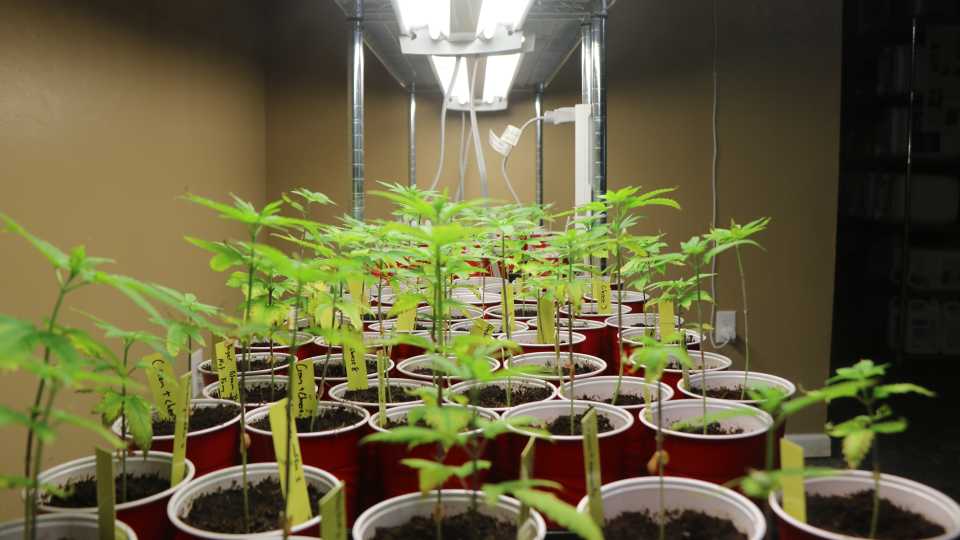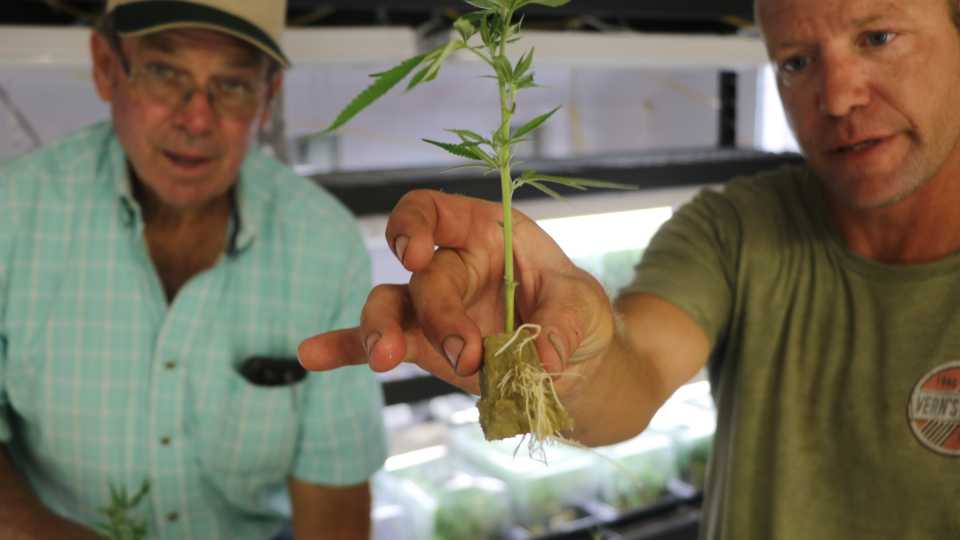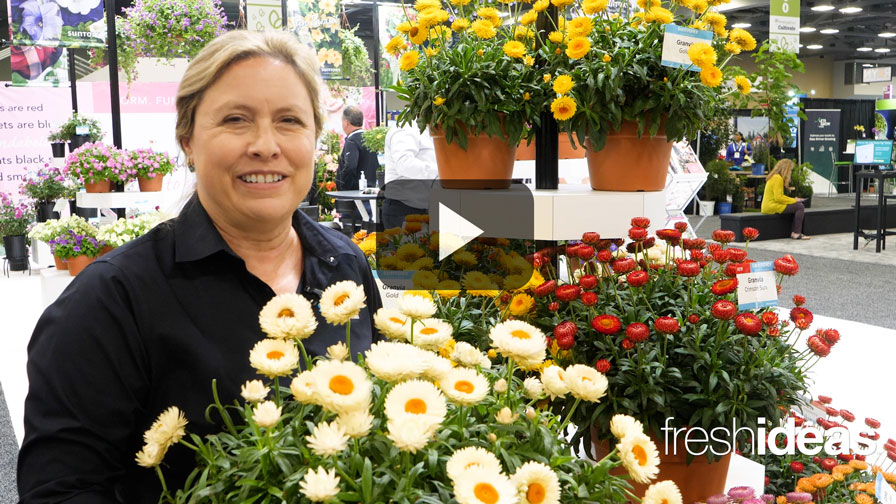No Shortcuts to Success in Breeding Cannabis and Hemp

Rooted cannabis clones await propagation at Kind Okie Farms in Edmond, OK.
Photo courtesy of Kind Okie Farms
Greenhouse growers that convert square footage to two of the more promising emerging crop markets to come along in a long time — legal cannabis and hemp — are warned to do their research on the genetics first.
“Selection of seed or plant sources should not be done in haste,” says Rick Novak, Colorado State University Director of Seed Programs. “These crops have had very little genetic improvement over the past few years. As a grower, you will have a great deal of risk with not a lot of guarantee.”
In short, says Novak: “Do your homework!”
No Breeding Shortcuts
Many experts — both on the cannabis as well as the hemp side — believe that grower success hinges on implementing and sticking to a robust first-year breeding and phenotyping program. This is accomplished, first and foremost, by securing a large amount of seed in different varieties from a source the grower trusts, and then raising the plants from seed and observing the subsequent outcomes for each seedling before selecting out your mothers, or base genetics, that will fuel your young plant propagation programs.
Once several plants within the same cultivar are identified that meet the long-term production needs of the grower — who may be selecting for plant height/canopy size, early vigor, harvested THC/CBD content, etc. — the grower begins taking clones from those plants, which in turn either end up as mother plants or wind up being the precursors to the mothers. It’s also important to keep in mind that, similar to how many growers of these crops maintain a perpetual, near-daily harvest schedule, the breeding process is also circular. Thus, like any traditional horticulture plant grown to scale indoors, having enough space to devote to the various stages of production is one of the top factors to being successful early on.
Starting From Clones vs. Seed
Although providers of young plants, or clones, are as numerous as seed providers in many legal markets, most experienced growers will agree that starting a breeding program from seed and then taking clones from only the best performing individual plants for propagation is the means to achieving consistent, repeatable outcomes going forward. “We specifically don’t want to start up with clones because clones that are raised in someone else’s greenhouse can bring in outside pestilence or diseases into our operation,” Michael Sassano, Principal, Solaris Farms, says. “So, we start with seeds and then we breed the seeds and cross the various strains, or cultivars, to get the certain phenos, or plant characteristics, that we want.”
Solaris Farms in Las Vegas, NV, makes for a good case study in breeding and phenotyping mostly due to where the greenhouse cannabis operation is located, as well as the relatively consistent “spray,” as Sassano terms it, of stable plant performance the group has achieved across its six, fully-packed production bays of sparkly, fragrant cannabis plants. Not to mention the fact that the Las Vegas, NV, recreational cannabis market is currently one of America’s most competitive legal-use markets, with consumers and retail buyers alike demanding a level of consistency in the end product that can prove tricky to replicate when scaling up with a crop that exhibits uneven genetic outcomes.
“The whole phenotyping process — you’re basically mapping the genetic outcomes of hundreds, sometimes thousands of plants in one run, and then picking the strongest ones and doing that same process over and over again until you find your most-stable mother genetics — this process usually takes six months to a year alone,” Sassano says. “You’ve got to be patient, and if you rush the process, you’ll never get that consistent performance that you’re looking for.”
Solaris focuses on developing and producing its own strains and genetic crosses of smokable, high-THC content flower for the local retail dispensary market. The group targets a product that consistently comes in between 28% and the ever-coveted 30%-plus THC content range. Cultivars that maintain an airy, open plant base to inhibit disease development in the humid desert greenhouse, as well as a consistent canopy height for ease of harvest, are other primary characteristics Sassano and his team of growers select plants for.
“Let’s say we bred up to 20 plants — that’s a nice round number for a grower our size,” Sassano says. “You’re breeding up to 20 different mother plants, so that’s 20 different phenotypes that you’ve selected for. You’ll have to raise those up to adulthood and then find out what happens. Then, you’ll take clippings from the 20 or so of those first-generation mothers that look good. Then you’ll pot those clippings up and, again, see how they grow to maturity, and then you’ll try to pick out a few of those — say three or four or five of the best ones — and you’ll raise those as the new mothers, meaning you’ll keep them from flowering and take clippings off them for plant propagation. The other mothers can then be destroyed.”
At least in the tightly contested Las Vegas adult-use market, the common work around securing clones from another commercial grower that has already put in the phenotyping work on the back end is not an option for various reasons.
“Vegas is such a small market, if the guy next to me is growing what I am growing then we’ll both be on the (dispensary) shelf together with the same flower, and that doesn’t really help our sales,” Sassano says. “Not to mention what I said earlier about introducing pathogens to the greenhouse.”
So, it begs asking Sassano after a couple years in the cannabis business, growing a top shelf product in a solid-wall greenhouse out in the Nevada desert, what have he and his crew learned when it comes to breeding? “Raising your own genetics in this market is truly an art form in every sense of the term,” he says. “Growing this plant is hard enough as it is. Why not take the time to raise your own genetics, and cross it and get to understand exactly what plant you have? That’s really what this is all about.”

Longtime Oklahoma sod farmer and first-time hemp grower Don Sebo (left) and one of his lead propagators show off a rooted hemp clone at Two State Sod Farms in Spiro, OK. Sebo grows young hemp plants in hoop houses before transplanting them outdoors.
Photo courtesy of Sebo Sod Farm
More on Hemp
Good news for growers that are in hemp for the long haul: Novak says that improved genetics, at least in hemp, are only a few years away. “In five years, much of this uncertainty around poor genetics will be sorted out by the marketplace,” he says. “We are currently seeing and will continue to see improved genetics each growing season, and many of the companies in this space are adopting technology as they can afford it, and this will result in a very competitive seed and young plant market going forward.”
Novak says there are pros and cons to every plant type of cultivar offered by breeders. Growers should be vigilant in looking for several phenotypic characteristics in selecting varieties. “As a farmer, you should strive to grow strong seedlings that grow quickly and are healthy,” Novak says. “So, what phenotypic characteristics are important? Dioecious or monoecious plants, which do you prefer? “Let’s start with seed,” he says. “You should look for little or no dormancy, good early season seedling vigor, and good seed size. Growing in a greenhouse, you’ll also want a plant that is not overly tall and has the ability to do a lot of branching, creating dense plants.”
Lock Those Best Performers in Place
So, let’s say at this point you’ve made it through the early growing pains of starting up in cannabis or hemp. You’ve likely invested a large upfront sum into sourcing stable genetics, and implemented a robust breeding and phenotyping program, and you’ve had some early success. Your crop is consistent, and your final product testing data is dialed in and accurate enough for buyers to purchase your crop at wholesale. Great! You’re all clear now, right? Time to start printing money?
Not so fast, according to Sassano.
“Once you find your ideal genetics, you can end up losing those genetics over time by breeding wrong, or maybe you get some type of contamination in the greenhouse that affects the plants at a cellular level — and you can be sure that this will indeed happen at some point,” he says. “The genetics get tired or watered down, or they lose the ability to withstand pathogens, whatever it may be — but it will happen.
“Now you must kill that entire crop and start at the beginning, all over again. But, had you preserved that genetic material in a tissue culture, which I liken to a frozen embryo of your genetics, kind of like how Han Solo gets frozen in cryogenic material, and when he’s thawed out he’s still the exact same Han Solo. That’s what tissue culture can offer. It’s a genetic snapshot in time of that plant and those genetics that you’ve selected for.”









